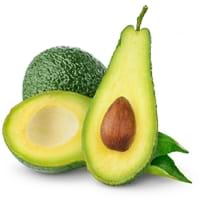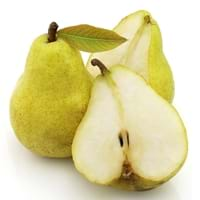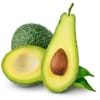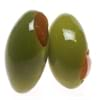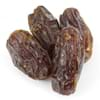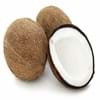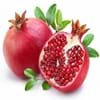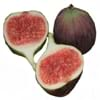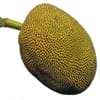Health Benefits
Cancer prevention, Natural detoxification, Osteoporosis prevention, Protection from chronic disease
Arthritis prevention, Cancer prevention, Gout treatment, Heart care
General Benefits
Boosts immune system, Controls blood pressure, Digestive aid, Improves eye vision, Maintains healthy cholesterol level
Anti-inflammatory properties, Boosts immune system, Controls blood pressure, Controls blood sugar levels, Cures fever, Digestive aid, Sore throat treatment
Skin Benefits
Brightens and lightens complexion, Reduces wrinkles, Skin cleansing, Treatment of dark spots
Reduces wrinkles, Treatment of acne
Hair Benefits
Acts as moisturizer, Good conditioner, Protects hair, Regulates hair growth, Rejuvenates scalp, Remedy for split ends, Shiny hair, Softening mask
Promotes longer and healthier hair, Shiny hair
Allergy Symptoms
Abdominal pains, Anaphylaxis, Inflammation, Itching, Latex Allergy, Nasal congestion, Skin Rashes, Swallowing difficulties, Swelling, Upset stomach, Vomiting, Wheezing
Anaphylaxis, Digestive Problems, Itching, Skin Rashes, Swelling
Side Effects
Allergic reaction, Hypersensitivity, Weight gain
Allergic reaction
Best Time to Eat
Along with meal, As a snack in the late afternoon, Don't consume at night and before bed, Don't eat after meal
As a snack in the late afternoon, Don't consume at night and before bed, Eat the fresh ones, avoid mixing with any other foods, don't eat after meal., Morning time (before lunch)
Vitamin B5 (Pantothenic Acid)
Vitamin C (Ascorbic Acid)
Vitamin K (Phyllochinone)
Calories in Fresh Fruit with Peel
Calories in Fresh Fruit without Peel
Not Available
Not Available
Calories in Frozen Form
Not Available
Calories in Dried Form
Not Available
Calories in Canned Form
Not Available
Not Available
Type
Berry, Tree fruit, Tropical
Tree fruit
Season
Summer
Autumn, Summer, Winter
Varieties
Bacon, Fuerte, Gwen, Hass, Lamb Hass, Pinkerton, Reed and Zutano
Green Anjou, Red Anjou, Bartlett, Red Bartlett, Bosc, Comice, Concorde, Forelle, Seckel and Starkrimson
Taste
Buttery
Crunchy, Sweet
Origin
Mexico, Central America
China, Japan
Soil Type
Decomposed Granite, Limestone, Sandy loam, Well-aerated
Clayey, Loamy, Sandy
Climatic Conditions
Humid, Without frosts
Cold, Hot, Without frosts
Facts about
- The oldest living avocado tree is found in University of California and was planted in 1879.
- Avocados can be swapped for butter in Baked Goods Recipes.
- Avocado ripens more quickly with a banana or an apple around.
- The first pear tree was planted in North America in 1620.
- The Chinese considered the pear fruit to be a symbol of immortality.
- This fruit was used as a natural remedy against nausea in ancient Greece.
Top Producer
Mexico
China
Other Countries
Chile, China, Colombia, Dominican Republic, Indonesia, Kenya, Mexico, Peru, Rwanda, United States of America
Argentina, Belgium, India, Italy, Japan, South Africa, Spain, Turkey, United States of America
Top Importer
United States of America
Europe
Top Exporter
Mexico
China
Botanical Name
Persea Americana
Pyrus communis
Synonym
Persea Gratissima
Not Available
Subkingdom
Tracheobionta
Tracheobionta
Division
Magnoliophyta
Magnoliophyta
Class
Magnoliopsida
Magnoliopsida
Subclass
Magnollidae
Rosidae
Family
Lauraceae
Rosaceae
Species
P. Americana
P. communis
Generic Group
Laurel
Rose
Difference Between Avocado and Pear
We might think that Avocado and Pear are similar with respect to nutritional value and health benefits. But the nutrient content of both fruits is different. Avocado and Pear Facts such as their taste, shape, color, and size are also distinct. The difference between Avocado and Pear is explained here.
The amount of calories in 100 gm of fresh Avocado and Pear with peel is 160.00 kcal and 57.00 kcal and the amount of calories without peel is Not Available and Not Available respectively. Thus, Avocado and Pear belong to High Calorie Fruits and Low Calorie Fruits category.These fruits might or might not differ with respect to their scientific classification. The order of Avocado and Pear is Laurales and Rosales respectively. Avocado belongs to Lauraceae family and Pear belongs to Rosaceae family. Avocado belongs to Persea genus of P. Americana species and Pear belongs to Pyrus genus of P. communis species. Beings plants, both fruits belong to Plantae Kingdom.
